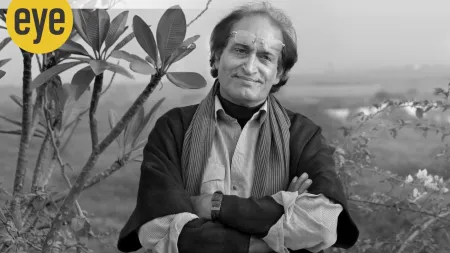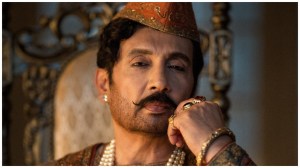- India
- International
We’ve failed to adopt a strategic policy stance for agricultural growth, says Former RBI Deputy Governor
Former RBI Deputy Governor talks to Indian Express, says we have "failed to adopt a strategic policy stance for enhancing and sustaining growth, ever since the success of the green revolution."
 Dr Rakesh Mohan, Fromer Deputy Governor, Reserve Bank of India and Chairman of the Committee on Financial Sector Assessment (CFSA). (File)
Dr Rakesh Mohan, Fromer Deputy Governor, Reserve Bank of India and Chairman of the Committee on Financial Sector Assessment (CFSA). (File)
Over the last year, there has been a spate of commentary on the completion of 25 years of India’s economic reforms programme. As a policy maker, Rakesh Mohan, who was associated with some of these changes in his role as Economic Adviser in the Ministry of Industry and later as RBI Deputy Governor and Secretary, Economic Affairs has now helmed a collection of essays by a range of practitioners, top industrialists, and academicians. India Transformed: 25 Years of Economic Reforms will be unveiled today by finance minister Arun Jaitley and former Prime Minister Manmohan Singh. He spoke to Shaji Vikraman on the positives and negatives over the last two decades and what still needs to be done. Excerpts:
Which big positives have been highlighted in India Transformed: 25 years of Economic Reforms?
There are five key achievements which are reflected in the writings. First is clearly the acceleration in growth. On an average, it is almost 7 per cent now. That’s a big feat after growing at 3-3.5 per cent in the first 35 years after independence. So I can’t see why we cannot grow at 8-10 per cent over the next 25 years. Second, there has been a remarkable reduction in poverty, especially in the last 15 years though it is still too high for comfort. Third, there has been a remarkable resurgence in entrepreneurship and as Omkar Goswami and Gita Piramal have documented in the book — many incumbents had to retool to remain competitive with the new entrants in the corporate sector. There is more entrepreneurship energy in the country with as many as 35 new companies dominating the top 50 list. Fourth, the opening up of the external sector has been remarkable. India was a relatively closed economy till the late 1980s. The current account has been opened fully, while the capital account is substantially open now to FDI and portfolio flows. This has been done in a calibrated manner and without disruption, which is unique in the history of reforms in the world. And finally, there is a palpable increase in self-confidence in the country, which is also reflected in the country’s foreign policy as articulated in the book by Shiv Shankar Menon and Shyam Saran.
What have we failed to achieve during the same period?
The true failure is in agriculture where we have failed to adopt a strategic policy stance for enhancing and sustaining growth, ever since the success of the green revolution… Then of course, there has been inadequate attention to health and education in the 70 years since independence. We cannot grow into a middle-income country unless we give more focused attention to the better delivery of basic health and education services. The contributions by Devesh Kapur and Nachiket Mor document details some of our shortcomings in these areas and the task ahead for the country. As the economy becomes more complex in a diverse country like India, we need to have less centralisation, more competent and independent regulators, and swifter resolution of disputes by a judiciary which is equipped to do that. A good recent step is the promulgation of the Bankruptcy Act which aims to ensure faster resolution of non-performing assets, but time will tell how the system implements this Act. Sarwar Lateef makes a forceful case for the need for upgrading our governance framework in sync with a more sophisticated and complex economy. He argues that a key governance reform is to do with greater inner party democracy in our political parties so that we step back from the norm of political dynasties that has become a standard feature of our political landscape, and this must be accompanied by greater transparency in political funding. Then there is the challenge of urban governance considering that we have more than 50 cities now with a population of over a million. They cannot be governed unless we have greater administrative decentralisation and empower city administrators adequately.

A key challenge identified in India Transformed is governance. Why has it become a more formidable challenge now?
A key issue is that the old administrative super structure, of generalists, has not changed. With the economy getting more developed and more complex you need domain experts in every sector. There is little domain expertise in most ministries with key officials being birds of passage in constant flight. This issue has not been addressed by any government and we continue with the colonial system of administrative governance, which has been abandoned almost everywhere in the world. Contrary to popular perception, the Indian government is small at all levels. In contrast to the finance ministry in India, its counterpart in the UK, the Treasury, is reported to have as many as 100 staffers at the joint secretary level when we have ten. The real issue is competence in governance. Unlike in a command and control economy, when people used to line up for government approvals, we should now have ministries and departments whose role is to promote or facilitate trade and industry. This cannot be done without domain expertise.
Since opening up, we have had a new class of entrepreneurs emerging and a big change in the pecking order of the top 25 or 50 business houses or groups. But do you see a new class of entrepreneurs emerging again in the present milieu?
One does see a slowdown in the churn at the top and in new entrepreneurship, particularly in the manufacturing sector. There was a burst of entrepreneurship in the 1990s and early 2000s as meticulously documented by Gita Piramal and Omkar Goswami, and as is eloquently evident in the personal stories of incredible growth related by Mukesh Ambani, Sunil Mittal, Deepak Parekh, Kiran Mazumdar Shaw and Baba Kalyani. But the current issue of concern is the slowdown in private industrial investment. There may be a new issue of crowding out. Though the auction of scarce natural resources like spectrum is progressive and leads to more transparent allocation, what it has done is that money from banks has been borrowed by telecom companies to pay for the spectrum auction. This in effect means that financial resources from banks are going to the government budget through telecom companies. This is not very different from the crowding out effects of higher government borrowing. The question is whether the fall in private investment in recent years is also related to such indirect crowding out of the private sector.
The other significant change in the last two decades has been the Centre-state fiscal framework and the emergence of what this government calls it co-operative federalism. How do you perceive these changes?
There has been a paradigm shift in the equation between the Centre and states after the reform process was put in motion in 1991, as argued in the book by Dr YV Reddy and by Laveesh Bhandari. Dismantling of the license Raj in all its aspects: no industrial licenses, no MRTP clearances, no foreign collaboration clearance, no import permits, no forex permits……..implied much greater decentralisation of economic decision making. In the older regime, private sector entrepreneurs and state officials alike had to come to Delhi for everything. After decentralisation and deregulation and the progressively higher transfer of resources to states, the question is whether the states have adequate capacity to adapt to this new regime. There is certainly greater motivation now to create such capacity at the state level. Given the significant capacity differences between states divergences between states may widen but Nitish Kumar’s performance in Bihar in his first two terms did demonstrate that governance can make a big difference in a poorer state, too.
Among institutions, the role of the RBI where you served as Deputy Governor has changed too. How do you see that evolving?
I have never been a votary of inflation targeting as I believe that it over simplifies monetary policy. Macro economics is much more complex and in India, you have to be even more mindful of issues related to financial stability and growth. As the North Atlantic financial crisis shows- monetary policy fixation on inflation targeting can be injurious to financial stability and growth. The RBI has been among the most stable of institutions in the country and has shown its competence over its 80-year history. So the government must make sure that nurtures this institution: the new framework that it has been given must be given time to mature.
25 years ago when we started the reform process, banks were in a bad shape. And a quarter century later, the story of bad loans and governance continues. Whats the biggest impediment to change on this front?
Banking: As carefully narrated in the book by Dr Rangarajan, we have come a long way over the last 25 years in terms of the financial sector. Until the early 1990s we didn’t even have a concept of NPAs or prudential norms in he banking system. There has been a significant improvement since then with private banks bringing in new energy and a host of new products which state owned banks then followed to be competitive. By 2008 ,the efficiency and profitability metrics of the public sector banks were approaching those of new private sector banks. This is when their NPA’s were way higher in the late 1990s but got solved in the 2000’s with higher growth. But significant deterioration has set in the balance sheets of public sector banks since. I am afraid the book does not address this issue. But let me offer some conjectures.Though the current NPA problem is serious, I believe that there has not been serious analysis of what has led to the current situation. Many of the accounts that are now classified as NPAs have arisen from large corporate lending post 2009-10.- Some of it could be because of exogenous factors- like steel prices crashing in the wake of global excess capacity; some of it may be due to excessive zeal by public policy favouring highly leveraged PPP investment in infrastructure due to lack of public resources; and some of it may be due to crony capitalism related corruption. Appropriate corrective action can only flow from better forensic analysis of what caused the generation of such bad loans. Was it poor governance in banks or faults in public policy. If we have PSU banks, we need to accept and understand that the government will have some say and that they have to perform some public policy functions. If there is no such need then there is no need for public sector banks. But we do need to have better governance standards and discuss whether we need to have a policy that provides for explicit subsidies to banks that following government policies.
May 05: Latest News
- 01
- 02
- 03
- 04
- 05





































